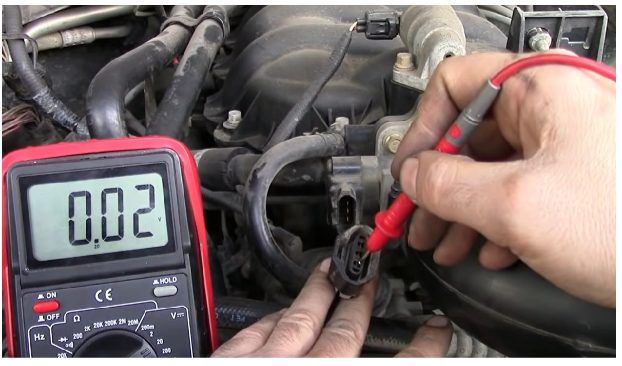How to Test a TP Sensor with a Multimeter (Step-by-Step Guide)

The throttle position sensor is a power resistor on the throttle body that feeds data to your engine control unit regardless of how open the throttle valve is. It should constantly be checked to see if the throttle position sensor is working correctly or malfunctioning. However, it might cause inappropriate engine airflow if not checked regularly.
In general, there are four easy steps on how to test a TPS sensor with a multimeter:
- Step 1: Examine for carbon buildup
- Step 2: Connect TPS to Ground Wire
- Step 3: Connect TPS to Reference Voltage
- Step 4: Check TPS Generating Proper Signal Voltage
Now, if you are curious about how these steps work, let me walk you through the step-by-step process:
Easy Steps to Test Your TPS with Multimeter
The resistance or voltage of the throttle position sensor is the most usual test. The data will be collected at different throttle settings, including closed, slightly open, and fully open.
The following are the steps on how to test a TPS sensor with a multimeter:
Step 1: Examine for Carbon Build-up

Remove the cleaning assembly by opening the hood. Check for impurities or carbon buildup on the throttle plate and body walls. Clean it off with a carburetor cleaner or a clean rag until it is spotless. Note that carbon buildup behind the throttle sensor might cause it to cease operating correctly and prevent it from moving smoothly.
Step 2: Throttle Position Sensor Connected to Ground Wire
Suppose your TPS is connected to the ground, disconnect it and inspect the connections for dirt, dust, or contaminants. Set the digital multimeter’s voltage scale to roughly 20 volts. Switch ON the ignition key once the voltage has been established.
Connect the remaining lead to the positive battery portion.
Then, connect the black test line to the three electrical terminals and execute the throttle position sensor test. There’s a problem with the wiring if the terminals don’t read 1 volt.

Step 3: TPS is Connected to the Reference Voltage
When learning how to do the bad throttle position sensor test, you must perform alternative procedures if your TPS sensor is linked to the reference voltage rather than the ground.
First, connect the digital multimeter’s black lead to the ground connection on the throttle position sensor. (1)
After that, switch the ignition to the ON position without starting the engine.
Link the red test lead to the other two terminals after you’ve finished this step. The throttle position sensor functions properly if one of the terminals reads 5 volts. The circuit is broken if none of the two terminals reads 5 volts. This is the most reliable method for testing the throttle position sensor.
Step 4: TPS Generating the Proper Signal Voltage
After completing the first testing process, you must complete further steps to check if the TPS sensor test was successful and provided the right voltage. Back probe the connector’s signal and ground connections. Connect your red lead of the multimeter to the signal wire, and the black test lead to the ground wire.
Turn on the ignition key but do not start the engine until the throttle is completely closed. The throttle position sensor functions appropriately if the digital multimeter reads between .2 and 1.5 volts. The digital multimeter should jump to 5 volts when opening the throttle plate. If the throttle position sensor test doesn’t reach 5 volts, it’s time to replace it.
Symptoms of a Faulty TPS
Acceleration Problems: Although your engine may start, it will have little to no power, causing it to shut down. It can cause your car to accelerate without you pressing the accelerator pedal.
Unstable Engine Idling: Bad throttle position sensors might create erratic idle conditions. Suppose you notice your car going bad, idling rough, or stalling out while driving; you should get that sensor checked out by a specialist. (2)
Unusual Gasoline Consumption: When the sensors fail, other modules may begin to function differently to compensate for the absence of airflow. You will notice that your car consumes more gasoline than usual.
Warning Lights: The check engine light is meant to alert you if any of your sensors fail. If your car’s check engine lights up, it’s best to find the problem before the problem worsens.
Take a look at some of our related articles below.
- How to test a low voltage transformer
- How to test crankshaft position sensor with a multimeter
- How to test a car ground wire with a multimeter
References
(1) lead – https://www.britannica.com/science/lead-chemical-element
(2) driving – https://www.shell.com/business-customers/shell-fleet-solutions/health-security-safety-and-the-environment/the-importance-of-defensive-driving.html
Video Reference
